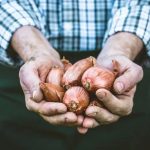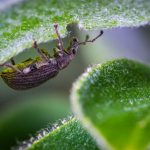Introduction
Living Soil Gardening is a type of gardening focused on the health and well-being of soil over producing fruits and vegetables. It centers around creating a balanced ecosystem in the soil which can create high-quality products without much intervention from farmers or gardeners. This technique operates by utilizing Cover Crops, Composting, and living organisms such as bacteria and fungi found naturally in the soil to balance nutrients needed for plants to flourish. By providing these necessary elements to the soil, it is able to sustain a healthy environment and cycle nutrients between various forms of life.
Living Soil Gardening is important because healthy soil is the foundation of any garden or farming practice. When the soil has gone through broken nutrient cycles due to mistreatment, it becomes difficult for any plants to thrive since they require crucial elements not present in poor quality or dead soils. Investing time into enriching soils means healthier plants that are more climate resilient while actually aiding in changing climate conditions rather than exacerbating them as with chemical fertilizers. In turn, this allows for healthier crops thus increased immunity from pests raised without pesticide use resulting in a cycle encouraging greater ecological diversity and sustainability.
Benefits of Living Soil Gardening
Living soil gardening is an ecological approach to growing plants that involves maintaining the natural populations of healthy microorganisms in the soil. Healthy soil means healthier plants, as the microorganisms benefit their growth and development by providing nutrients and improving nutrient availability. Living soils also contain nitrogen-fixing bacteria to improve the fertility of the soil, which increases overall yields, reduces fertilizer use, and protects against pest problems.
The environmental benefit of living soil gardeners is related to reduced pollution from synthetic fertilizers and added chemicals like herbicides and pesticides that usually find their way into waterways or air with common garden-care practices. By not using these harmful substances and working to promote a healthy microbial population in your garden’s soil, you can have a positive impact on your local water quality and air quality by reducing pollution.
The economic benefits are present mostly through reduced costs associated with fewer inputs needed for plant maintenance; for example, less fertilizer or pest removers or added organic matter like compost are typically required when gardening with living soils than when practicing traditional tactics used to maintain vegetation health. Besides cost savings, maintenance is easier because there’s no need to aggressively weed or constantly monitor nutrient levels in the soil.
Finally, living soils also provide human health benefits due to improved nutrition in harvested crops since they thrive in healthy soils full of beneficial microbes that increase nutrient density. Microbial action also helps balance pH levels so plants are able to absorb more readily available nutrients — meaning larger harvests of higher quality food come from gardens grown under this sustainable system of gardening!
Essential Components of Living Soil Gardening
Living soil gardening is a sustainable cultivation method that emphasizes working with and replenishing the natural elements in the soil to promote plant health. To create a healthy living soil environment, there are three essential components: nutrients, bacteria and/or fungi, and organic matter.
Nutrients provide critical energy for plants as well as microorganisms in the soil to grow and thrive. The most important macro-nutrients are nitrogen (N), phosphorus (P) and potassium (K). Micro-nutrients such as calcium (Ca), iron (Fe) and zinc (Zn) are also important for proper plant nutrition but in smaller quantities. Organic matter helps hold both water and air in the soil, creating an ideal habitat for small organisms to prosper and help form a strong food web that connects these organisms to the plants’ root system to support its growth. Bacteria or fungi are necessary components of living soil gardening because they break down matter into digestible form that provides plants with essential vitamins, minerals, enzymes, proteins, carbohydrates, etc. They also protect their host from pests by suppressing harmful organisms from getting established on the roots of your plants. Finally, microbial diversity is key for a resilient garden; the more varieties you have of different types of beneficial organisms will increase your chances for successfully producing valuable crops over time. Overall having these fundamental pieces will ensure success when attempting growing using living soil gardening principles.
Steps for Creating Living Soil
Tools for Living Soil Gardening:
1. Garden Compost: Use compost to enrich the soil by adding organic matter and microorganisms.
2. Mulch & Cover Crops: Mulch helps conserve resources, suppress weeds, and prevent erosion while cover crops help replenish soil nutrients, fix nitrogen and improve erodibility.
3. Plant Nutrients: Add phosphorus, potassium and other micronutrients in the form of fertilizers and worm castings to help areas of soil devoid of elements necessary for plant growth.
4. Aeration & Drainage Tools: A hoe is great for aerating a garden bed but you may need to build up raised beds or utilize additional tools like rototiller for deeper aeration. Good drainage is essential for optimal plant growth so trenches can be built around the garden bed so water can drain away from plants when it rains heavy.
5. Water Conservation Tools: Rain barrels and drip irrigation systems will help ensure all plants are getting their required water without wasting any runoff due to evaporation or inefficient runoff techniques of traditional watering methods.
Remedies for Common Problems
Living soil gardening is a type of gardening that focuses on healthy, living soil and avoids many of the common problems faced by other types of gardening. Common pests and diseases can be managed in a variety of ways. Predator insects, such as ladybugs, lacewings, and parasitic wasps are an effective way to control some pest populations. Insecticidal soap or natural oils can also be sprayed on plants to help reduce pest populations. For fungal diseases such as mildew and rot, increasing air circulation around the plant can help prevent the spread of the disease. Adding compost or other organic matter to the soil can also improve drainage, which helps discourage fungal growths. In addition to these measures, introducing beneficial fungi into the garden area can also help with some plant diseases.
Plants for Living Soil Gardens
Living soil gardening is an all-encompassing approach to organic, sustainable gardening. This type of gardening uses the principles of permaculture and regenerative agriculture to replenish depleted soils and sustain rich ecosystems teeming with life. Plant selection and placement in living soil gardens are important considerations, as it’s essential to select plants that will not only thrive, but can also help augment the quality of the soil.
When building a living soil garden, it’s important to fill it with a mix of both topsoil and subsoil, as this gives the soil enough porosity and drainage for plants to thrive. In addition to nutrient capability, a living soil garden creates a supportive environment for beneficial fungi, bacteria, insects and wildlife. There are dozens of plant options for living soil gardens designed for various climates—annual vegetables and herbs, perennial vegetables and herbs like lavender or rue, fruits like berries or currants, edible flowers such as calendula or roses; trees including walnuts or hazelnuts; shrubs like blueberries or Oregon grape; ground covers like clover. Many refer to these plants as “companion plants” because they often need other plants around them in order to maximize their potentials as part of an entire growing ecosystem. For example, nitrogen-fixing legumes can help improve nutrient content in heavier soils by supplying more nitrogen through their roots; companion planting with companion species such as dill can reduce pest infestations; cover crops can be planted between harvest cycles to suppress weeds while adding nutrients back into the soil (e.g., rye grass); while pollinator-friendly flowers attract beneficial pollinators that not only help improve yields but also enhance biodiversity within the garden eco-system altogether.
Frequently Asked Questions
What is Living Soil Gardening?
Living soil gardening is a type of gardening that uses natural materials such as compost, mulch, rocks, and clay to develop and maintain living soil. This type of soil promotes healthy growth by providing essential nutrients to plants, promoting water retention and aeration, and improving drainage.
What are the Benefits of Living Soil Gardening?
The benefits of living soil gardening include improved longevity in soil fertility and health, fewer pests and diseases, healthier plant development and yield, improved water retention capacity in dry climates, reduced need for pesticides, herbicides and fertilizers resulting in reduced toxicity in the environment. Additionally it can reduce the energy needed to transport chemical inputs like fertilizer over large distances.
How Can I Create a Living Soil Garden?
1) Start by selecting a location that receives enough sunlight – six to eight hours per day is best.
2) Loosen the existing soil to provide air flow before adding compost or other organic amendments such as worm castings or bat guano.
3) Incorporate additional organic matter into the top 8-12 inches of the soil depending on how deep you have amended your soil initially.
4) Add any desired native microbes or beneficial organisms to promote microbial growth in your garden bed such as mycorrhizae fungi spores or kelp powder etc. 5) Plant seeds or transplants. Water regularly with ample amounts of water per session but ensure that you allow time between watering for moisture levels to recede before watering again – this will help encourage the formation of beneficial bacteria necessary for nutrient cycling within the garden bed habitat!
Conclusion
Living soil gardening offers a number of benefits, such as reduced water usage and improved soil health. It also encourages biological activity which helps to promote healthy plants and gardens. This type of gardening is an important way to ensure we are taking care of the planet for generations to come. By protecting our soil and maintaining its health, we can protect our natural environment from further degradation.
We should all consider embracing the practice of living soil gardening in order to increase sustainability and preserve the precious resource that is soil. Additionally, it has the potential to produce large gains in terms of healthier food production and less reliance on fertilisers and other chemicals. A concerted effort must be made by communities and individuals alike to restore balance back into our agricultural systems by investing in living soil gardens today.

Welcome to my gardening blog! I am passionate about plants and enjoy sharing my knowledge and experiences with others. In this blog, I will write about everything related to gardening, from tips on how to get started to updates on my own garden projects.





